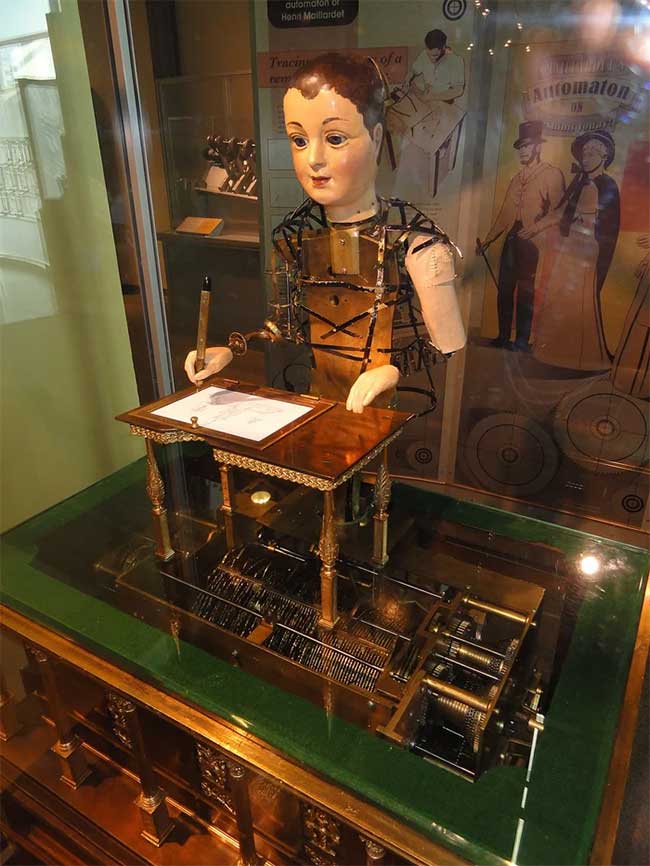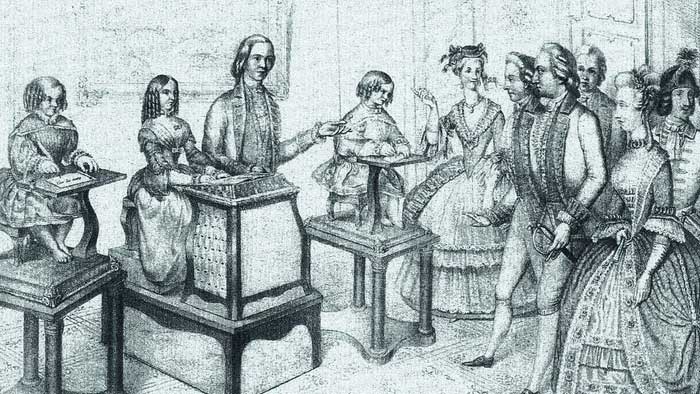In fact, this robot is considered a type of small mechanical “toy,” made from over 6,000 pieces that can automatically write.
The term “robot” is becoming increasingly common in our vocabulary, although most people still view it as something novel. Robots are not as new a technology as we might think, as they have existed since 1773, known as the “Drawing Boy Automata.” However, in the past, people did not refer to such technologies as robots, but rather as machinery or mechanisms.
This robot was forgotten for a time because people in the 18th century could not comprehend this technology, especially since it was ahead of its time. Some referred to this robot as “The Writer” because of what it could do.

Swiss inventor Pierre Jaquet-Droz initially made a name for himself as a designer of luxury watches, but he is now remembered as the creator of three of the most extraordinary robots of the 18th century.
The man behind this groundbreaking robot is Pierre Jaquet-Droz. Pierre was the first clockmaker behind the famous Automata brand. Born in Switzerland, he always had a keen interest in watches, particularly in how they worked. From a very young age, he disassembled old clocks to explore the complex systems inside.
Even today, Pierre Jaquet-Droz is considered the finest watchmaker of his time, and his talent has proven this. In 1772, when literacy rates were still quite low, he wanted to demonstrate that machines could achieve what many could not.

First built in 1768, “The Writer” is a two-foot tall doll designed to resemble a boy sitting at a desk. Using a series of encoded disks placed on a rotating axis and thousands of moving parts, the robot can dip a quill into ink and write up to 40 pre-programmed characters on a piece of paper.
This is why Pierre decided to create a programmable writing machine. With the help of his son, Henri Louis Jaquet-Droz, and a friend named Jean-Frederic Leschot, Pierre created over 6,000 custom mechanical components to produce “The Writer.”
This machine can use a quill and ink to write any letter of the English alphabet displayed on a wheel at the back. Amazingly, this robot can operate independently by inking the quill without using any power source.
You can see how the robot operates in this short documentary by Professor Simon Schaffer. The video shows how the robot functions and moves naturally while writing. Even more strangely, the robot’s eyes focus on each letter it writes on the paper, as if it were alive.
Throughout his career as an inventive creator, Pierre also developed two other types of robots called “The Draftsman” that could draw four pictures, including a portrait of King Louis XV, and “The Musician” that could play five different songs on a fully functional organ. Some historians claim that Pierre is the father of computing with the mechanisms he created, at least the fundamentals of computing.

Together with his son and friend, Jaquet-Droz later developed two more humanoid robots operating on the same principle. “The Draftsman” could draw four pictures, including a portrait of King Louis XV; meanwhile, “The Musician” could play five different songs on a fully functional organ. Each robot’s eyes would move to follow their actions, and “The Musician” was also designed to have her chest rise and fall as she “breathed” and bowed her head between melodies.
When these creations were introduced to the public, people were simply amazed. Some who did not understand the complex mechanisms thought that these machines were truly possessed by some kind of supernatural power, while many others mistook them for simple toys due to their appearance.
The world has never truly understood what a technological leap and significant historical moment this was. Even today, not many people are aware of this creation, and some still believe it to be a hoax. Those who remain skeptical can witness the machine in person at the Museum of Art History in Neuchatel, Switzerland.
Like Leonardo da Vinci or Nikola Tesla, Pierre Jaquet-Droz was just another visionary, thinking ahead of the available technology of his time or simply born in the wrong era.

Jaquet-Droz’s robots were displayed before astonished crowds in the royal courts of Europe in the late 18th century and were later transferred to a museum in Switzerland. All three still function perfectly to this day.


















































